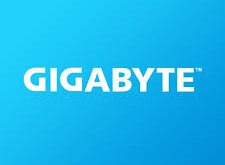Crypto arbitrage is a unique trading strategy applied by investors across all kinds of asset trading markets. The goal is for investors to capitalize on slight price discrepancies of digital assets across a variety of multiple markets and across numerous exchanges.
In the case of the OKEx exchange, there are a number of different arbitrage trading options; these are Cross-market arbitrage, delivery contract arbitrage, capital rate arbitrage, lending after buying + contract hedging arbitrage, and currency mining.
All of these types of trading strategies vary in terms of risk level, but all of them can be carried out by amateur traders with low capital for investment. So, without further adieu, let’s dig deeper into the types of arbitrage trading.
- Cross-market arbitrage
OKEx Saving →FTX

FTX’s UDST interest rate is set at 4-5%, meaning users can deposit BTC, ETH, among other popular currencies on the OK platform. This unique platform transfers USDT through a cross-currency margin account, deposits to the FTX platform for a loan, and provides an income. Users can interact with other small coins in a similar way, offering the chance to borrow low-interest rates coins from the OK platform and deposit to FTX to lend.
FTX→OKEx Saving

Since FTX’s OKB interest rate is lower than OK’s 36.5%, traders could consider borrowing OKB from FTX and depositing it in Savings.
Risks and Countermeasures
The price of collateral can quickly fluctuate, as well as the fact it takes time to redeem and close positions. The countermeasure is to use an API to monitor price fluctuations in real-time or the platform to provide users with alarm messages/emails. This allows users to keep track of market movements and it means they can redeem and close their positions in advance.
- Delivery Contract Arbitrage
Looking at ETH in the second quarter contract as an example, there is a basis of approximately 2.66%. Since the contract is closer to the delivery date, the price is closer to the spot price. So, as time goes by, the spread will gradually return to zero.

Therefore, you can borrow USDT leverage to achieve a long position with ETH, with a USDT borrowing interest rate of 1%, traders can short an ETH second-quarter contract at the same time. Then, close or wait for delivery (when delivery is approaching) and gain income.
Risks and Countermeasures
- If the basis expands during this period—floating losses may occur, but as long as it persists until delivery—the final basis must be zero. The countermeasure is to consider a certain amount of floating loss tolerance when opening a position or preparing an emergency fund as a contingency. To aid with this, the platform also has a corresponding alarm message.
- During this period, the cost of borrowing money increased. In this case, no adequate user countermeasures have been thought of for the time being. Generally speaking, traditional markets use interest rate forwards or use interest rate derivatives to hedge risks.
- Capital Rate Arbitrage
Currently suitable for users who have the ability to use the API. This will change once the arbitrage started has launched, meaning most users will be able to make use of the API.
Positive Funding Rate Arbitrage
For example, SWRV’s current funding rate is relatively high, so you can consider shorting the SWRV contract to earn a funding rate. However, because arbitrageurs do not want to bear the losses caused by the increase in SWRV prices, they can consider buying SWRV spot hedges, but the utilization rate of funds isn’t particularly high. In the case of low USDT interest rates, traders can borrow USDT with leverage at a very low cost, buy SWRV with leverage, and short SWRV contracts at the same time to earn funding rates.
![]()

Negative Funding Rate Arbitrage
For example, the SLP interest rate is 1%, but recently the funding rate has stabilized and is negative. For this type of currency, SLP can be sold with leverage, while the contract is long SLP. As such, the price fluctuation of SLP will not bring profit or loss. You can benefit purely from the funding rate.

![]()
Risks and Countermeasures
- Funding rate arbitrage is suitable for users with low handling fees, due to the open legs and an increased volume of transactions.
- It is necessary to control the number of positions on both sides to be basically the same. Currently, it is also necessary to use the API for inventory management, which can be used directly after the arbitrage strategy is launched.
- Generally, small currency fund rates are relatively high, and when the fund rate is unstable or reversed, although basis profit can be generated, it is not easy for large funds to enter and exit. The countermeasure is to control positions and distribute them to a number of currencies suitable for arbitrage.
- Lending After Buying + Contract Hedging Arbitrage
For currencies with higher interest rates, you can consider directly buying and depositing Yubibao to make a profit. However, as the price of small coins may fall and cause losses, you can consider shorting contracts to hedge risks.

Risks and Countermeasures
- The contract capital rate may be negative. If the capital rate loss is greater than the borrowing income, the arbitrage will lose money instead.
- When the currency price rises rapidly, Yubibao’s internal coins cannot act as a margin, which may cause the contract side to be liquidated. The countermeasure is to allow Yubibao’s funds to act as a margin for platform development.
- Currency Mining
You can consider using BTC and ETH to borrow USDT and exchange it for USDC lock-up mining.
![]()
Take MATIC as an example. A large number of currencies have spot mining, and you can consider borrowing the currency directly to invest in lock-up mining.

Closing thoughts
Whether you’re starting out in trading or a seasoned veteran of the crypto market, the beauty of arbitrage trading is that exchanges like OKEx allow users to automate the process of finding the trade price discrepancies across various currencies. With the use of the native API, OKEx users will be able to monitor price fluctuations in real-time and start profiting from arbitrage trading.
 Newspatrolling.com News cum Content Syndication Portal Online
Newspatrolling.com News cum Content Syndication Portal Online








